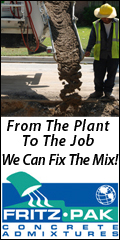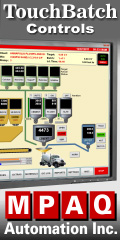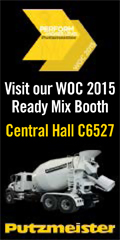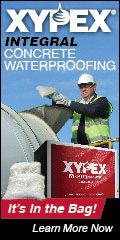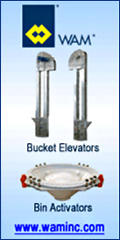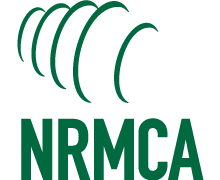
| Archive | nrmca.org | E-Store | Conferences & Events | Certifications | InFocus | Membership Directory |
NRMCA Reports on What's New for Concrete Materials in ACI 318-14 ACI 318-14, Building Code for Structural Concrete, is completely reorganized from the previous version, 318-11, reports NRMCA Senior Vice President of Engineering Colin Lobo. The new Code was developed to follow the sequence that a structural engineer goes through when designing buildings. In ACI 318-11, chapters covered designing for member response, such as flexture, shear, compression, etc. In ACI 318-14, the primary design chapters cover design of structural members, such as beams, columns and slabs. There are many "toolbox" chapters that are referred to from the member chapter – seismic provisions, member connections, detailing of reinforcement, etc. It is anticipated that it might take a while for practicing designers to get used to the new Code to find the location of provisions they are familiar with in previous versions.
In ACI 318-11, most of the requirements for concrete were covered in Chapter 3 (Materials), Chapter 4 (Durability) and Chapter 5 (Strength and construction issues).So where is all this content in 318-14? Most of the content is now in Chapters 19 and 26 in 318-14.
Chapter 19 covers the essential requirements the designer needs on concrete properties for design. It sets the minimum specified strength level to be used, estimate of the modulus of elasticity, design modification factors when using lightweight concrete and the requirements for durability of concrete when subject to specific exposure.
The evolution of Chapter 26 was interesting. The general concept is that the Code is written to the designer (referred to as the licensed design professional or LDP) and the contractor cannot be responsible for Code requirements unless these are stated in the construction specification and other contract documents. It is recognized that specialty engineers associated with contractors, like those who produce precast concrete structural members, may have design responsibility, in which case they would need to comply with those pertinent sections of the Code.
Chapter 26 is titled Construction Documents and Inspection and is directed toward the LDP responsible for incorporating project requirements into construction specifications and drawings. The development of Chapter 26 caused the evaluation of whether several construction-related Code provisions really needed to be in the Code. In the case of concrete, many Code provisions were covered more appropriately in ASTM C94 or other standards and were eliminated with appropriate reference to the supporting standards. In the next revision, it is likely that more Code provisions in the current Chapter 26 will be eliminated as they may not represent a minimum requirement for public safety (basic premise of the Code) or are covered in more detail elsewhere.
The provisions in Chapter 26 are organized in two distinct types of provisions: design information and compliance requirements. Design information is project-specific construction details that the LDP needs to include in construction documents. Compliance requirements are general Code provisions that establish a minimum level of quality for construction of a project. Only applicable provisions should be included in project contract documents.
The sections of Chapter 26 pertinent to concrete are:
26.4 Concrete Materials and Mixture Requirements – this includes reference specifications and other requirements for materials that can be used in concrete; requirements for concrete mixtures that are related to strength, durability and construction; and provisions for proportioning concrete and documenting proposed mixtures to the LDP.
26.5 Concrete Production and Construction – this covers provisions for production of concrete; placement and consolidation; curing concrete; concreting in cold and hot weather; and construction of members and joints.
26.12 – Concrete Evaluation and Acceptance – states the requirements for strength tests; frequency of testing, strength acceptance criteria and investigation of low strength test results. The following are changes to requirements for concrete from ACI 318-11: •There is no detailed section for proportioning of concrete mixture. It was felt that this was information directed to the concrete producer and not the LDP; so it did not belong in the Code. However, the section on mixture proportioning in ACI 301, Specification for Structural Concrete is referenced (26.4.3). The age of a strength test record for determining standard deviation and for submittals, and for laboratory trial batches is limited to not older than 24 months. •In Chapter 19, for concrete exposed to cycles of freezing and thawing (Exposure Category F), the descriptors of the exposure condition were clarified and additional discussion was added to the commentary. Previously, all the exposure classes in this category required a max w/cm and minimum specified strength, f'c, of 0.45 and 4,500 psi, respectively. This was changed to (0.55, 3,500 psi) for Exposure Class F1; (0.45, 4,500 psi) for F2 and (0.40, 5,000 psi) for F3. For plain concrete, requirements for F3 are (0.45, 4500 psi). The change to Exposure Category F3 was to make the requirements the same as Exposure Category C2 (exposed to an external source of chlorides). • In Chapter 19, for what was previously Exposure Category P is renamed to Exposure Category W. This applies to concrete in contact with water that requires a low permeability. There was no change to the requirements.
• For concrete exposed to water soluble sulfates, Exposure Category S, it is now permitted to use Type IT blended cement conforming to ASTM C595, Specification for Blended Hydraulic Cement. These are ternary blended cements that contain two supplementary cementitious materials in addition to portland cement.
There are other minor changes because of the Code reorganization process, but are not very significant. Since much of the committee's time was spent on Code reorganization, major Code changes were not possible. There are several Code change proposals being worked on in the new Code cycle. It is anticipated that the next version of ACI 318 will be published in 2019.
Colin Lobo was a member of ACI Committee 318 that developed the reorganized Code. He will continue his membership on the Committee in the next Code cycle. For more information, contact Colin Lobo at clobo@nrmca.org or Karthik Obla at kobla@nrmca.org. |
|
|
